But, Is It “Development”? This ‘Development’ & “SHILPAYAN” Drive of The CPI(M) Led Govt In Singur, Bangur etc
By S. Das , For A Proletarian Party Journal
The day the govt of WB sworn in – the seventh consecutive ‘left front’ govt led by the CPI (M) – it pompously declared its mission of carrying on its ‘industrialisation’, “ shilpayan ” & ‘development’ programme ahead with the goal of making WB the no: 1 state in Industry after becoming ‘no: 1 state in Agriculture’! (In the pages of this journal, in the last issue 1 , we have seen the total falsity of their Goeblesian claim about becoming ‘no: 1 state in Agriculture’ in India ; at the most WB can be termed as no: 5 state in Agriculture in India in terms of productivity of paddy.) They took the “Peoples’ mandate”, that is, securing a bit more than 50% of polled votes, as a weight to run full steam ahead with their pet ‘Development – Industrialisation’ drive. The “TATA”-s sent a letter to them that very day with some ‘proposals’ which was revealed to the public later. They considered setting up a small passenger car factory – the car nick named ‘peoples car’ with a price tag of only a hundred thousand –in the Singur Block in Hooghly district and demanded 1000 acres of land of their choice.
The CPI (M) Chief Minister and bosses of those ‘left’ parties have become so obedient servant of the bourgeoisie that they rush to acquire land the capitalists want, disregarding totally the feelings of the people who own those pieces of land or who live there, work there. And to evict the people they have only two weapons: allure by false promises, and, drive them out by force – overt or covert. Years ago, they evicted forcefully, with bullets and bayonets, thousands from the Chandmoni Tea Garden and neighbourhoods, only to give the land to the ‘promoters’ who wanted to build up a satellite township there. Till date, no common people evicted received any ‘compensation’. The ‘peacefully’ evicted people of Rajarhat met the same fate, while the govt and those promoters are selling Rajarhat land at prices, at times, higher than that of Bangalore , as complained by some barons of IT sector.
But as always, their party machinery, big and wealthy, along with the bourgeois press, howl against any protesting voice and brand protesters as ‘anti-development’. But what ‘development’ they have in store for the people instead?
Here we want to discuss the very question of Development as being proposed by them for WB from revolutionary proletarian perspective. Though ‘development’ in general as propounded by the Indian bourgeoisie, the govt at the centre and those in the states, and parties like the CPI (M), is an important subject to confront, and an urgent one, to save time and space we’ll only probe the issue partially. Next we shall see what is development in proper that the people needs.
The Deceptiveness of Their ‘Development’ Agenda
Singur is, in a sense, moderately ‘developed’ area – if one measures the “green revolution’s contribution” in WB. The land the TATA-s wanted is irrigated land and cropped on an average twice or more a year. Apart from a couple of govt deep tube-wells, that land has nearly 40 mini-deeps and also get water from DVC canals. Singur is one of the most developed blocks in WB, of course in WB standard, with cropping intensity almost 2 (two). Here potato yield is nearly 34.5 tons per hectare, which is perhaps, or nearly, the highest figure in WB. 2 During the last five to ten years, cultivators of this area bought perhaps the largest number of Power-Tillers [commonly called ‘hand-tractors’ in Bengal] among all areas in WB. Of course, these figures does not tell the level of ‘development’ the common toiling people of Singur attained; that is a totally separate issue and we shall see that later.
The CM and his close colleagues are saying: there are too much people in the agricultural sector; they need to be transformed to industrial workforce, without which ‘development’ is impossible. But will it happen? Is that happening? An average 1000 acres of triple-cultivated land here can generate direct agricultural employment of more than 200,000 man-days per annum. If peripheral economic activities are counted, that figure may reach 250,000 – 300,000 man-days, which is arithmetically almost equivalent to 800 – 1000 permanent workers employed in the would be TATA factory.
Probability 1: If all the workforce in agriculture there get transformed into regular industrial workforce – it certainly will mean ‘development’ in monetary terms of those agro-labour force, and also in terms of productive utilisation of their labour; they will be able to give many more hundreds of thousand man-days; since, for a good part of the year the agro-work force remain economically, productively ‘unemployed’ or ‘underemployed’. Unemployment – Underemployment picture of the villages are so horrible that the CPI (M) – Congress etc parties can joyously and pompously declare the “Yearly [ only ] 100 Days’ Job Guarantee Program” running in some districts of India , and also in WB, as an achievement !! [We shall look again into this aspect of unemployment – underemployment picture later.] Probability 2: If 800-1000 of that agro-work force get permanent employment in the proposed TATA factory – well, that will mean: an equivalent conversion of labour from agricultural work to industrial work.
However, local people know it very well from their experience – that those two Probabilities are Improbable, Incredible and Impossible – that nobody from them is going to get a permanent TATA job, not even in any ancillary unit. They will be rendered jobless, homeless, and insecure forever. The owners will get promises of compensation; the sharecroppers and labourers will get nothing. There is a Ceramic Factory nearby, not an old one. A few locals get employment there – for 15-20 days a month, at 25-50 Rs a day! Where the govt declared minimum wages of agricultural workers – though it is a thing that no agricultural worker ever gets in WB – is Rs 67.75 a day! And Singur is now ‘blessed’ with a factory – all others, e.g., Bangur, Chandmoni, Rajarhat, East-Calcutta EM Bypass sides, Dankuni, etc, etc are ‘blessed’ with 5 or 7 Star Hotels, Express ways and Flyovers for speeding cars and bikes [bicycles and pedestrians debarred], High-rise Buildings – Shopping Malls – Entertainment Centres – Golf Courses – etc, and of course IT industrial-parks for the rich people and the aspiring-to-be-rich educated youth of the ‘middle-class’. Then what will happen to those displaced people once attached with agriculture? Most of them will be thrown out from the sphere of productive labour. Many of them will be paupers – not industrial proletarians.
For all of them the CPI (M) leaders like Benoy Konar (peasant-front-leader), Nirupam Sen (Industry Minister) have already written pamphlets, where they have shown that many jobs of doorkeepers, odd-job-boys, maids, mason-helpers, etc will be available! Recently the state secretary of CPI (M) added another job: that of a Hawker. From a working peasant or agro-labourer (albeit poverty-stricken, no doubt) becoming a maid/servant/gatekeeper/hawker/rickshaw-puller… a ‘development’ indeed! Some ‘lucky’ ones may become some makeshift Tea cum Tiffin stall owners or betel-leaves–cigarettes–chewing-tobacco stall owners on the pavements, always in a precarious existence – any time the ‘Cleansing cum Beautification’ drive of the govt can bulldoze them out, and they’ll have to rebuild their shanty stalls again.
Even if the capitalists make factories in undeveloped area, i.e., on lands cultivated only for one season a year – as is demanded by many, even some ‘left’ or ‘revolutionary’ organisations – there also 1000 acre employ labour equivalent to 200-250 permanent workforce of that factory! Some ‘communist revolutionaries’ are saying: we too want development – but we demand setting up industries on barren land or the land of the closed down factories. Do these people know anything about the conditions in industries, particularly in newly built industries? Do they know why factories get started or close down? And do they really want this kind of, this way of development?
What the TATA and its ancillary units will show we do not know, but many new factories have already come up in WB, and all of them share some common characteristics: a very few ‘permanent’ workforce; a vast number of ‘daily waged’ temps with paltry daily wage ($1-$1.5 in general) and extended duty hours (at places even 10 – 12 hours or more); practical absence of any labour-laws and inspections and so on so forth 3 Not much a better prospect is there for the existing factories: Retrenchment in the garb of ‘voluntary-retirement-scheme’, dwindling permanent workforce, increasing temporary labourers, increasing workload, more and more sophisticated machineries that call for less manual labour, shrinking labour ‘rights’ hard won by fights decades ago… etc. What fate awaits TATA ancillary workers? That corporate house, with their corporate business logic, transferred their Truck production from Pune. The number of workers employed in TATA ancillaries in Pune went down from 18,000 to 65. Sudden unemployment of so many – certainly it’s a blessing of capitalism. The TATA people in their electricity company in Mumbai retrenched several contract-workers before 2 years. The workers protested, got organised, fought – and at last got frustrated and infuriated seeing those established trade union bosses betrayed them – two leading workers self-immolated in front of the TATA HQ during their gathering; it was September 2003. Mumbai working people and youth got shocked and furious. Agitations started snowballing. To keep their ‘image’ less stained the TATA quickly gave some ‘compensations’ to those workers. Certainly Capitalism and Capitalists are such inhuman, TATA-s are no exception. But, are we, should we welcome them and this type of ‘development’!
In recent times the CPIM leaders including the CM are repeatedly saying an axiomatic truth: The capitalists are here to do business, to make profit; they have not come for charity. Why they are telling such a thing well known to everybody? There is only one reason, and that’s the inner meaning they want to carry to all: We, our Party, our govt, will not tolerate anything that hampers this capitalist business even by a small degree. That is why the TATA-s congratulates the seventh time win of the CPIM; that is why the AMBANI presents them red roses for victory; that is why the Prime Minister calls the WB CM the ‘model CM’.
In the IT sector ‘strikes’ are virtually ruled out by the CPI (M) bosses; and night-shift duties of girls has again become ‘legal’ – courtesy, the IT-BPO industrialists and their foreign corporate clients. Moreover, the Salem – group people of Indonesia and many Indian Companies [tied up with foreign TNC-s] and Foreign companies are keen in setting up SEZ-s [special economic zones] where they are de facto subsidised by the govt and where no labour laws whatsoever exist! Then why the working people, be they workers or peasants, and the general unemployed youth welcome or demand this kind of development ? If you make factories with devilish working condition – and I am unemployed, hungry, uprooted – I shall go and seek work there. Then we shall try to be organised and revolt against you; we will demand more wages and decent conditions; we shall try to stop any anti-labour anti-peasant stepping of you people. However, we never will ‘welcome’ you sharks: surely, the workingmen or unemployed will think this way. And will those people tell us – in which country parties and masses had to put forward ‘demand’ of industrialisation? Nowhere. Under capitalism [and imperialism – which is the latest stage of capitalism as depicted by Lenin] it is them the capitalists plan when, where to set up industries and to produce what and how much – and they follow capitalist logic in deciding all these. They never invest keeping in mind any public interest or social development. They are now eager to invest in WB for a simple reason – cheap and ‘under control’ labour, and a servile govt and party at power paving ways for furthering profit.
Educated sons and daughters of the so-called ‘middle’ / ‘upper-middle class’ people are upbeat and vying for those few thousands of good-paid jobs that may come up in the IT sector, upper level jobs in the industries and mainly in the ‘service’ sectors serving the well-to-dos. The media, businessmen, and the likes are full of glee. And they will have plenty of ways to earn more money and plenty of things to do with their lots of money. But all of them together constitute only 12-15% of the population, at maximum 20%. Their enrichment, development is not the development of the society. For the remainder, those fellows at power have that old rotten rusted “Trickling Down” theory. Yes, some thousands among tens of millions of unemployed youth will get the rest of the lower end jobs. Some will get consolation of doing own “ business ” that yields perhaps $2, at max $3 a day, Rs 2500 – 4000 per month. But the problem of unemployment will not even fractionally be solved. The evicted people will become paupers. Then why on earth they, those ‘revolutionaries’ should support or demand this development, this industrialisation [and propose alternate sites]: so as not to sound ‘unpleasant’ to those middle class fellows including the ‘intelligentsia’ in general?
India got its ‘independence’ in 1947. Almost 60 years have passed since then. What the ruling classes did in terms of ‘development’ and/or ‘industrialisation’ in this period? In a short article like this one we cannot venture to show in detail the efforts, plans, policies, etc of the Indian ruling classes during many sub-periods of this past 60 years. But generally speaking it can be assertively said that: 1. The Indian bourgeoisie did not [and could not] take the path of radical land reform be it in the American way [Lincoln] or in the French way [post revolution, which the French took even inside Europe when the ‘mainly peasants’ army marched victorious for almost two decades…] or in the Russian / Chinese way [post revolution]. They took the path of Jünker Reform, like the line Tsarist govt of Russia took from 1861 till, say, 1914 or 1917. 2. The Indian bourgeoisie compromised with Imperialism and chose to act subservient to the imperialist interests. The imperialist dictated in the sphere of policies too. 4 3. In the period of ‘Globalisation’ the ruling classes became more submissive to imperialist interests.
In effect all these mean: In such a ‘Dependent’ country industrialisation and ‘capitalist development’ in proper sense, in the sense of what could happen in the pre-imperialist era, is almost impossible. This ‘almost’ is ‘almost total’ — barring a few exceptions happened after the Second World War in a few countries due to exceptional circumstances. India , luckily or unluckily, did not fall in this exceptional category. So it is developing through a painful, bitter, distressing, crushing [for the masses] slow… process; in the ‘most industrialised state’ MR [Maharashtra] the govt had to introduce programs like ‘Employment Guarantee Scheme’ as far back as 1972 – so acute was the joblessness situation and crushing poverty, pauperisation there that the govt had to take steps to placate that potential volcano a little – and which now they spread to some 100 districts in all major states. So acute is the unemployment situation and crushing poverty, that the Congress, CPIM etc UPA parties could proudly proclaim the yearly only ‘100 days job guarantee program’ as an achievement!!! Nothing exceptional, and nothing that will not develop and fortify these features, is going to happen in WB, in spite of all the sweet words of the CM and his friendly foreign/native businessmen.
Development in True Sense: Why, What, How
Certainly the general working people of Singur, as well as the general working people of WB or India , need development in the true sense. Being one of the most agriculturally developed blocks did not and could not bring development to those people of Singur: less than a third of the population are engaged as ‘principal’ workers, which means, they get work for more than 182 days a year (though such govt statistics are hard to believe); there are only 2.2 beds in hospital for every 1000 population; the human development index stood at 0.6 in the year 2001 (less than the average figures of 5 states of India); …etc. 5 In general, according to govt statistics, WB is ranked 8 th or 9 th among Indian states in terms of human development index. And India perhaps stands at least after 100 countries in terms of that index!
Then we know the condition of WB govt hospitals and ‘primary health centres’ – you will have to buy almost every medicines from outside, the govt stopped supplying such common medicines long ago. You will not get much needed anti-venoms for snake-bit villagers; the much necessary ‘dialysis’ to keep such patients living is a very costly affair beyond reach of almost or more than three-quarters of the population; even anti-rabies vaccine is rarely found in govt hospitals. Sending somebody to hospital means getting into debt, even if, as mostly happen, neighbours come out with helping hands. Agricultural workers and poor peasants (that is them who do not have enough land to provide them with minimum necessity and so they have to work outside) get meagre wages and, on an average, always less than the govt declared one, the latter is now nearly Rs 67.75, i.e., nearly $1.5 a day; and they remain unemployed for a good part of the year. An owner working-peasant with an acre [approx 0.4 Ha] of twice cultivated land [and with no other source of income] is not above and beyond poverty – though govt statisticians may put such a peasant above the ‘poverty line’.
According to the census data of 2001 – about 80% of village households in WB (and slightly more than 55% of village households in Hooghly district) are without electricity (!) where having electricity connection for just a single electric bulb in a household takes that household in the count of ‘homes with electricity’ ; more than 45% of rural households of WB (and slightly more than 32% of rural households in Hooghly district) do no posses a bicycle [the all India figure is 57.22%, the worst figure is of Kerala, more than 84%]; less than 28% of rural households had transaction with banks 6 [the all India figure being 30.11%; the all India highest figure is just above 50% in Kerala, and the lowest is less than 15% in Assam], and so on.
Development in such places certainly does not mean setting up a car factory, some IT companies, several star-hotels, shopping malls, expressways… etc, or even several factories by foreign or native entrepreneurs. The development that people need is a thorough going change, a radical social & economic transformation, which in Indian condition means nothing less than a Peoples Democratic Revolution. The toiling peasants and ‘landless peasants’ need land, and land has to be acquired by expropriating the non-peasant landowners. They need the power so that they may design consciously their development programme. This will enhance rapidly production and productivity in agriculture and create the possibility of agricultural development without falling into the trap of imperialists-planned ecologically devastating ‘green revolution’ measures. Imperialists’ properties are to be confiscated and so also the big bourgeoisie’s, to hand those over to the state of workers and peasants. Workers and peasants will really rule the country, the society, the economy, and everything. Only in this way the society as a whole can prosper, only this path will lead to a society without any forms of exploitation. Meeting the peoples basic need – food, clothing, housing, health, education etc in sufficient-for-human quality and quantity will be the first prime task for that revolutionary workers’-peasants’ state and the rulers, workers and peasants, themselves.
Therefore, the propaganda of revolutionary organisations against this type of eviction drive in the garb of ‘development’ must incorporate the need of the real development, the need of establishing a workers’-peasants’ state. A workers’ peasants’ state means: where matters of development will be decided by the workers and peasants themselves, where each measure of development will, instead of enriching a few, in real terms facilitate the development of the people. When ‘society’ will allocate its resources [land, labour, etc] for the development of ‘society’ as a whole, questions of ‘evictions’, pauperisation’, ‘ignoring many and benefiting a few’, etc will not arise.
Notes:
1. Is WB An Agriculturally Developed State? – For A Proletarian Party, May 2006, pp 62-64
2. “Human Development – Block-wise picture of WB” – in Bengali, by – Sachchidanada Dutta Roy [ex Chief of the Bureau Of Applied Economics & Statistics, Govt of WB]; his other published books also portray in-depth study of the author and provide real pictures in abundance
3. Slavery In The Global Factory, For A Proletarian Party, July 2005, pp 7-9
4. See the UPDATE issue of June 2006 for imperialist dictates on land reform measures, and how, even the CPIM led ‘lefts’ followed those
5. Same as the book mentioned in 2, pp115-6
6. Ibid, pp146, 150
Source : For a Proletarian Party Article
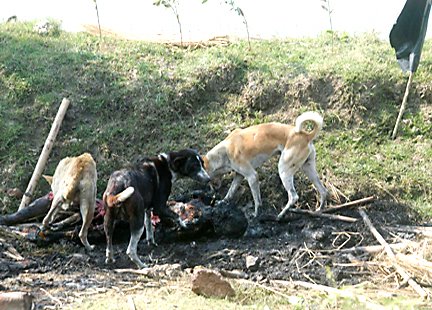

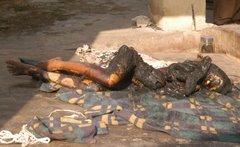
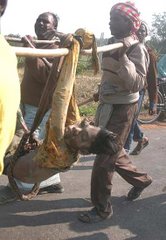
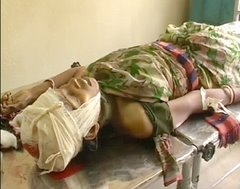

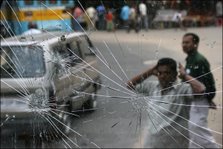
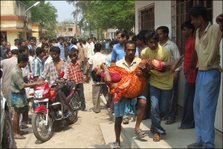

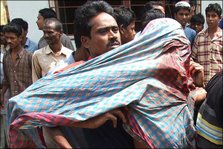


No comments:
Post a Comment